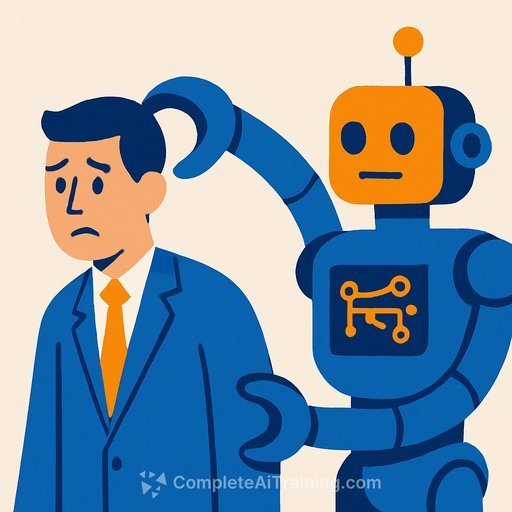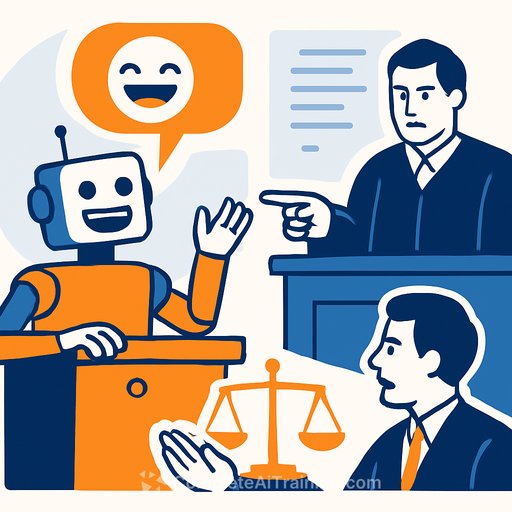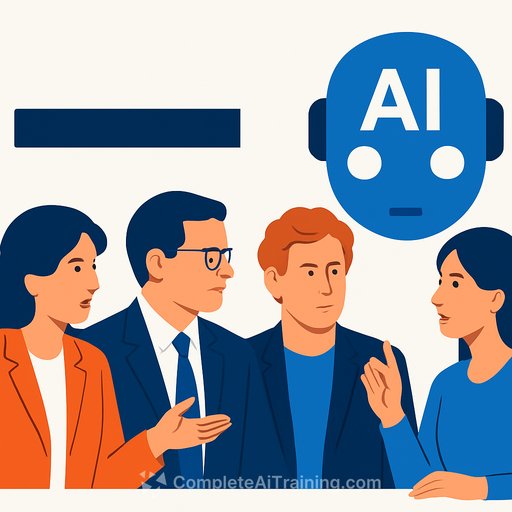AI Is Already Eating Writer Income - Here's How To Respond
AI has already cut deep into writing work. One 38-year-old writer lost 70% of his clients in two years after sites swapped briefs for chatbots, wiping £120,000 from his pipeline.
Microsoft's research on 200,000 Copilot chats suggests AI can complete a large share of tasks for historians and coders (90%), salespeople and journalists (80%), and DJs and data scientists (75%). That pressure rolls downhill to copywriters, content writers, scriptwriters, and editors - especially on high-volume, formulaic work.
What's Getting Replaced vs What Still Needs You
- High exposure writing tasks: product descriptions, SEO blog drafts, listicles, summaries, rewrite requests, metadata, content briefs, outlines, keyword clustering, cold email templates, boilerplate PR.
- Lower exposure writing tasks: original reporting, investigative features, expert interviews, on-the-ground pieces, sensitive communications, brand voice development, legal/compliance reviews, creative work tied to lived experience.
Jobs broadly exposed include customer service assistants (72%), financial advisers (69%) and product promoters (62%). On the low-exposure side: painter-decorators (4%), cleaners (3%), roofers (2%), surgical assistants (3%), ship engineers (5%), and nursing assistants (7%).
What This Means For Writers In The Next 12 Months
Expect hiring freezes, rate pressure, and "try AI first" procurement. Many clients will attempt a chatbot-first workflow, then return when they hit quality limits.
Some already have. After a wave of AI trials, a share of buyers now request "no AI content" because generic tone and empty phrasing mark it as machine-made.
The Writer's Moat
1) Be Visibly Human
- Do original reporting: quotes, first-hand notes, photos, call recordings, transcripts.
- Use proprietary inputs: client data, user interviews, internal docs, experiments.
- Publish opinions with skin in the game: predictions, stakes, and clear reasoning.
- Show your process: sources, frameworks, and how you reached the angle.
2) Become AI-Fluent, Not Replaceable
- Use chatbots for research synthesis, outline options, headline variations, tone checks, and fact cross-references - then you do the thinking and final voice.
- Speed up transcription, summarisation, and first-pass edits to move budget from "grunt work" to interviews, analysis, and structure.
- Prompt starter: "Here's the brief, audience, and goal. Propose three outlines: one contrarian, one data-led, one story-first. Flag missing source types I should gather."
3) Sell Outcomes, Not Words
- Package deliverables with goals: traffic qualified leads, email list growth, demo bookings, PR placements.
- Bundle services: research interviews + content strategy + production + distribution plan + metrics review.
- Report simple KPIs: rankings movement, CTR, scroll depth, sign-ups tied to pieces.
Pricing And Contracts In The AI Era
- Add "human-written" or "no AI assistance" clauses if the client requires it; price the time that proof demands.
- Offer both: AI-assisted tier (faster/cheaper) and human-only tier (slower/premium) with clear QA steps.
- Define approvals, fact-check scope, and source obligations. Clarify IP ownership and training-data disclosure expectations.
- Scope distribution and performance review so you get credit for results, not just word count.
Portfolio That Beats A Bot Check
- Show proof of work: interview snippets, source lists, data tables you built, field photos, annotated drafts.
- Link bylines with outcomes: "This piece drove 1,200 sign-ups and 9 qualified demos."
- Publish contrarian takes with receipts. AI avoids risk; you don't.
Income Resilience For Writers
- Productise: expert briefs, brand voice guides, content playbooks, editorial calendars, newsroom-in-a-box.
- Create assets: newsletter, niche reports, templates, micro-courses, paid communities.
- Diversify formats: scripts for shorts, podcasts, webinars, slide decks, client training.
- License and repurpose: syndication, translations, audiograms, internal training docs.
The "40 At Risk / 40 Safer" Idea, Decoded For Writers
The pattern is simple. Text-heavy work with repeatable structure is exposed; on-site, physical, or relationship-heavy work is less exposed.
- Examples of at-risk roles (content side): copywriter, content writer, social caption writer, basic SEO blogger, affiliate reviewer, junior editor, ad variant writer, resume/cover letter writer, product description writer, newsletter curator.
- Examples of safer roles (human-heavy): investigative journalist, field reporter, brand strategist, communications lead for sensitive issues, creative director, researcher with primary data, subject-matter expert writer, scriptwriter tied to talent, editorial lead managing sources, facilitator/interviewer.
Outside writing, research points to high exposure for categories like sales and coding, while trades like roofers and cleaners sit at low exposure due to physical skill and context.
What Companies And Government Owe Workers
Spending on AI is rising fast. One global survey found 78% of businesses plan to increase budgets this year, and another suggests ~40% of employers expect workforce reductions where tasks can be automated.
Policy should cover reskilling, guidance on disclosure, and a safety net for workers during transitions. Training promises exist, but clear playbooks for employers and contractors lag behind.
Your 7-Day Action Plan
- Day 1: Audit your client mix and briefs. Mark tasks as automate, augment, or human-only.
- Day 2: Build a two-tier offer: AI-assisted package and human-only premium. Rewrite your services page and rate card.
- Day 3: Create three proof pieces with process artifacts (sources, interviews, data). Publish and pitch with outcomes.
- Day 4: Set up an AI workflow for research, outlines, and edits. Document prompts that save you hours.
- Day 5: Email past clients: "Here's how I deliver human-grade work, faster, with transparent QA." Include the two-tier option.
- Day 6: Upskill on prompts, tools, and ethics. See curated options for writers: AI tools for copywriting and courses by job.
- Day 7: Ship a lead magnet (template, checklist, mini-report) and start a weekly email that proves your expertise.
Reality Check
Some roles will shrink. Others will expand because lower costs create new demand, new formats, and new niches.
Use AI to remove the boring parts and spend your time on reporting, judgment, and originality. That's the leverage clients will pay for.
What Writers Are Saying
"It's a betrayal. You've put your heart and soul into it for so long, and then you get replaced by a machine."
"Sterile and just not interesting, uniform and bleak and surface-level and hollow."
On the flip side: clients are already asking for "no AI" and returning for work with voice, evidence, and care. That's your lane.
Your membership also unlocks:






